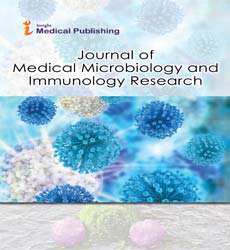ISSN : 2634-7164
Journal of Medical Microbiology and Immunology Research
How ominous is the new COVID19 variant Omicron (B.1.1.529)?
Abstract
Reports of the latest circulating SARS-CoV-2 variant collided at the end of Nov. 2021 with a pandemic landscape that had become almost exclusively dominated by one, highly transmissible Delta variant (B.1.617.2). Only 2 days after these early reports were publicized, the World Health Organization (WHO) bestowed the newly classified variant of concern (VOC) with a name befitting its ominous preceding reputation—Omicron. By mid-Dec. (less than a month later), Omicron had spread not only throughout South Africa, where it was first identified, a sharp rise in COVID-19 cases in Gauteng, the country’s most populous province, but also to 77 additional countries. Furthermore, with upwards of 50 mutations in its genome, 30 of which exist in the gene encoding Spike—the SARS-CoV-2 surface protein responsible for binding to human ACE2 receptors to facilitate infection, and the immunogen used in all vaccines currently authorized for general use—significant concerns about increased transmissibility and immune escape have been raised. Research is beginning to address those concerns. The fact that Omicron has continued to spread in areas with high prevalence of prior SARS-CoV-2 infection and in well-vaccinated areas is particularly concerning and has led scientists to conclude that it is possible that Omicron will outcompete Delta and (at least temporarily) become the dominant strain of SARS-CoV-2 across the globe.
Open Access Journals
- Aquaculture & Veterinary Science
- Chemistry & Chemical Sciences
- Clinical Sciences
- Engineering
- General Science
- Genetics & Molecular Biology
- Health Care & Nursing
- Immunology & Microbiology
- Materials Science
- Mathematics & Physics
- Medical Sciences
- Neurology & Psychiatry
- Oncology & Cancer Science
- Pharmaceutical Sciences
